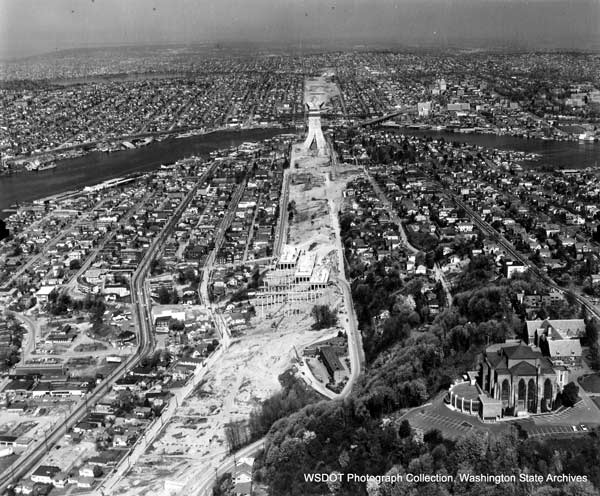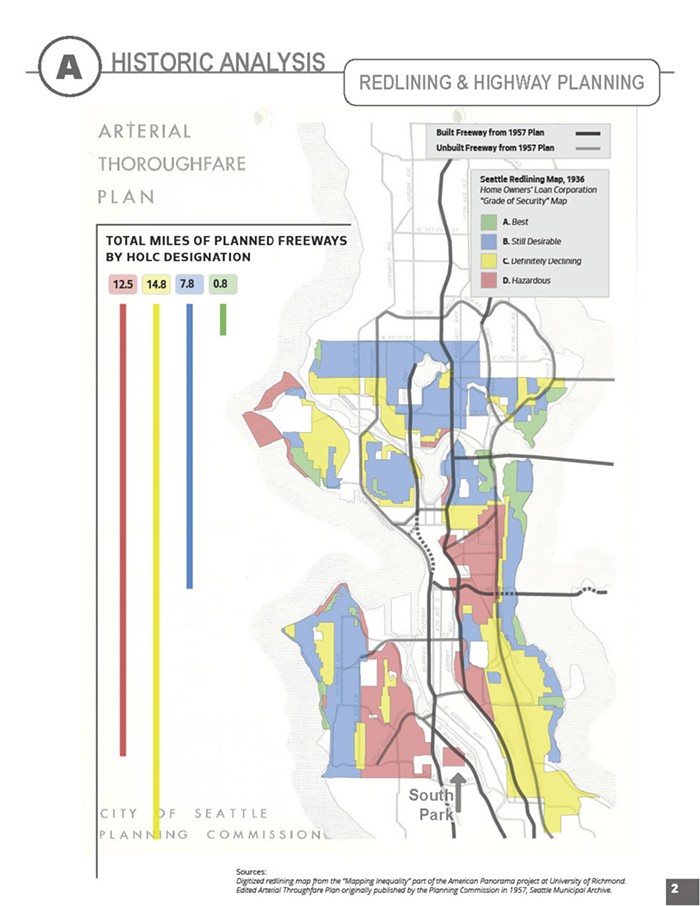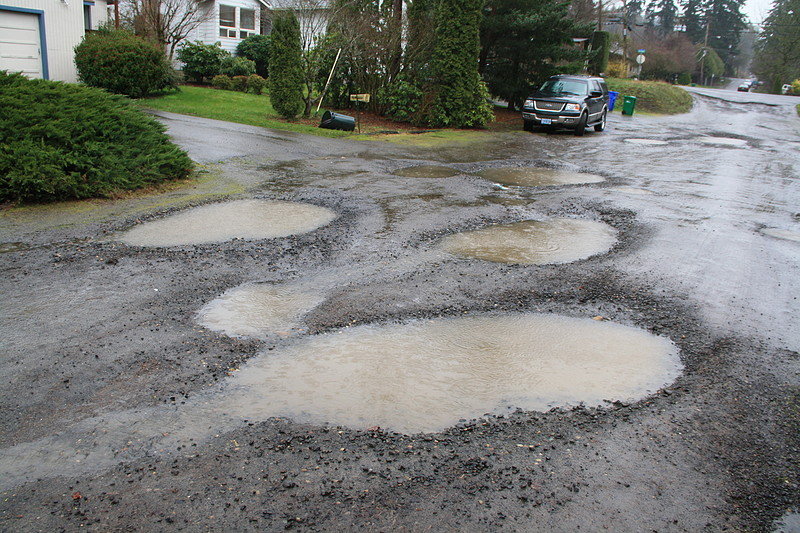
The concept of having cars that can drive themselves on our streets without a human operating them still seems like a long way down the road. That being said, driving automation is among the hottest topics of transportation discussions these days and has gained lots of criticism and applause. The purpose of autonomous vehicles is to make life easier for everyone. Just picture sipping coffee and making plans for the day while relaxing in your autonomous vehicle (AV); this is the advertised experience, anyway. Gone are the days of having to drive home from work during rush hour or wake up at five in the morning to make it to the bus or subway in time. Despite offering many promising solutions to current issues, such as reducing environmental pollution, eliminating the burden of driving, and saving time (and money if carsharing is considered), many people wonder how our cities and urban forms would change upon their rise.
Just as railways and trams transformed our cities in the 19th century and private cars reshaped them in the mid-20th century, the rise of autonomous vehicles in the 21st century has the potential to redefine our urban landscape and the role of transportation infrastructure in our cities.
Now let’s talk about a few potential ways that AVs can impact and change our cities.
Reshaping urban parking and space usage with self-driving cars


The first and most compelling scenario is what will happen to all the parking spaces that currently exist in our cities. The impact on parking depends on how many AVs are in use and whether people own them individually or share them with others. If AVs are widely shared instead of owned individually, it could free up parking space. Certain parking spaces may be used for other purposes, such as residential complexes, shopping malls, or new construction in general. The available on-street parking spots can be potentially used in specific areas where there is a high volume of daily pedestrian passengers and can be reallocated to spaces for street vendors without impacting the traffic flow. In cases where shared self-driving cars are used a lot and don’t need to park as much, they might return to depots in less expensive areas on the outskirts of the city. This means we might need fewer off-street parking lots in the city center. But we’ll still need space for passengers to get in and out, especially at transportation hubs and major city spots like offices and public buildings. In addition, AVs can also park more efficiently, taking up less space. They can even park in cheaper areas outside the city when they’re not needed, so parking doesn’t have to be near popular places. However, these changes will greatly affect how cities earn money from parking, which is necessary for funding city projects.
Improving the look and feel of our public spaces
Reducing the number of cars parked on our city streets opens up a great opportunity to reimagine and reshape our urban spaces. Instead of endless rows of parked cars, we can repurpose this valuable land in ways that not only make our cities more appealing but also have a positive impact on the environment. This transformation allows us to allocate the newly available space for eco-friendly transportation modes like biking, walking, and efficient public transit systems. These alternatives not only reduce pollution but also contribute to the aesthetic aspects of our cities.


Furthermore, the transition to self-driving cars, especially electric ones, means that we won’t need as many traditional fuel stations in every neighborhood anymore. This change provides a unique chance to convert these locations into something that benefits our communities. Before this can happen, some sites might need environmental cleanup. However, once that’s taken care of, we can think about innovative uses for these spaces in every neighborhood. Perhaps they could become convenient community stores or convenient spots for picking up online orders. In some urban areas, combining commercial spaces with housing or offices could make the most efficient use of these sites. This could lead to more vibrant, mixed-use developments that enhance the neighborhood’s character and provide a live-work-play environment. In any scenario, this raises an essential question of how we can best utilize these prominent and easily accessible locations to enhance the well-being of our communities.
Impact of AVs on property values and planning
The impact of autonomous vehicles on property values and urban planning is noteworthy. While the age-old adage of “location, location, location” remains crucial, self-driving cars introduce some intriguing shifts. These vehicles have the potential to boost property values in certain neighborhoods where easy access to self-driving transportation is a selling point. However, this trend might not hold true everywhere, as neighborhoods heavily reliant on prime locations for commuting could witness stagnant or decreasing property values.
The convenience of self-driving cars in commuting could lead to shifts in residential preferences, possibly drawing people away from crowded urban centers to the suburbs. While suburbanization may gain momentum, this doesn’t necessarily mean city centers will be abandoned. In response to these changes, effective urban planning and land-use policies are vital. The rules governing where buildings can be constructed and how land is utilized must adapt to this evolving transportation landscape. Striking the right balance between building in open areas (green fields) and optimizing existing spaces (infill developments) is crucial for creating more livable and efficient cities that cater to a variety of lifestyle preferences.
Conclusion
Fully self-driving cars may become common in cities within the next 10–20 years. This would have big impacts on city planning and transportation. Studies show different possible results for cities when self-driving cars are widespread. Some think self-driving cars will help city centers by providing less parking space. This would allow more buildings and public spaces downtown. But others believe self-driving cars will increase suburban sprawl. People may live farther out if cars can drive themselves. Cities should plan now for the changes self-driving cars may bring. Parking and roads downtown may need less space. Cities need ideas to reuse this space in good ways, like for housing, parks, or offices. Cities also need to decide if self-driving cars should mostly replace mass transit like trains or complement it. Policies could make self-driving cars link to transit hubs rather than compete. This could reduce traffic and keep cities livable. The future impact of self-driving cars on cities is not just about technology. It depends on how cities manage and regulate these vehicles. With smart policies, cities can steer self-driving cars to improve life and space for people.
References
Here’s How Driverless Vehicles Will Utterly Transform How Our Cities Look. (n.d.). Retrieved from Futurism: https://futurism.com/heres-how-driverless-vehicles-will-utterly-transform-how-our-cities-look
Legêne, M., Auping, W., Homem de Almeida Correia, G., & van Arem, B. (2020). Spatial impact of automated driving in urban areas. JOURNAL OF SIMULATION, 295-303. Retrieved from https://www.tandfonline.com/doi/epdf/10.1080/17477778.2020.1806747?needAccess=true
Rice, A., & Tomer, A. (2017, October 16). How will autonomous vehicles transform the built environment? Retrieved from Brookings: https://www.brookings.edu/articles/how-will-autonomous-vehicles-transform-the-built-environment/
Shaver, K. (2019, July 20). City planners eye self-driving vehicles to correct mistakes of the 20th-century auto. Retrieved from The Washington Post: https://www.washingtonpost.com/transportation/2019/07/20/city-planners-eye-self-driving-vehicles-correct-mistakes-th-century-auto/
Stead, D., & Vaddadi, B. (2019). Impact of AVs on property values and planning: A review of recent scenario studies. Cities, 125-133. Retrieved from https://www.sciencedirect.com/science/article/pii/S0264275118313945 casa_token=2s4FqqImwssAAAAA:vLPJ3dlgFQdCxJfPC-fk9_FB-Ly2oiCbIe68BkqgZtLQ34tdt47_UTWdlsaC57dEuPs-037A






![Fig. 2. Boston's Big Dig, which provided Boston with "a new highway system that has made zipping beneath Boston and Boston Harbor more easy" [16]](https://uiowatransportplanning.wordpress.com/wp-content/uploads/2023/10/bostons-big-dig-which-provided-boston-with-a-new-highway-system-that-has-made-zipping.jpg?w=620)




















